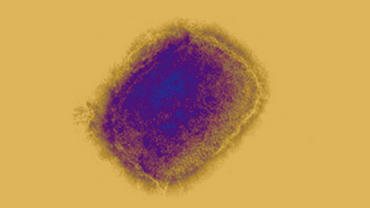Outbreak of mpox caused by Monkeypox virus clade I in the Democratic Republic of the Congo
Since the publication of the Threat Assessment Brief ‘Implications for the EU/EEA of the outbreak of mpox caused by Monkeypox virus clade I in the Democratic Republic of the Congo in December 2023’ [1], there has been a large increase in the number of mpox cases reported in the Democratic Republic of the Congo (DRC) [2,3]. Since 2023 and as of 29 March 2024, DRC reported a total of 18 922 suspected mpox cases including 1 007 deaths. In 2024, and as of 29 March, 4 488 cases have been reported, of which 319 have been confirmed. A total of 279 deaths have been reported in the country in 2024 (CFR: 6.7%). Mpox cases have been reported in 23 of 26 provinces of the DRC [4].
Background
According to the World Health Organization (WHO), and as of 23 November 2023, the majority of the cases were reported in the central and northern regions of the DRC: Equateur, Mai-Ndombe, Sankuru, and Tshopo [3].
According to the information available, the vast majority of infections in the ongoing outbreak continue to be caused by monkeypox virus (MPXV) clade I, although only about 10% of cases have been laboratory-confirmed [3].
All known routes of transmission of MPXV (zoonotic, human-to-human close contact, and human-to-human sexual transmission) are reported in the ongoing DRC outbreak, but their respective proportion in this outbreak are not defined. In 2023, sexual transmission of MPXV clade I was first documented in a cluster of six mpox cases (five male and one female) from Kenge, Kwango province in DRC, as reported in ECDC’s most recent threat assessment [3,5].
In the current epidemiological reports, children younger than 15 years old account for 70% of the total cases. This age group also accounts for 88% of total deaths in the country [4]. Historically, mpox has been documented with high counts and mortality rates among children in the DRC [6]. The high incidence of cases among children is most likely linked to the non-sexual human-to-human transmission route. This route could include household contacts of adults who have contracted the disease through both human-to-human transmission (sexual or non-sexual) or zoonotic transmission via spill-over events from small animals.
Some cases have also been reported among sex workers in the mining area of Bukavu (Kamituga) in South Kivu [3]. Of 51 mpox cases hospitalised between September 2023 and January 2024, 24 were sex workers, five of whom were male [3,7]. Considering that sex work is likely concentrated around mining areas and that there are no direct travel connections to Europe, the relevance of this transmission route for potential importation into sexual networks in the EU is likely limited, including into sexual networks of men-who have sex with men (MSM), where the majority of mpox transmission in the EU has occurred to date. However, local spread into neighbouring Rwanda and Burundi is possible, and it is important to monitor the situation there as travel from Kigali to Europe is more common.
Based on the MPXV genomic sequences published on GISAID EpiPox and NCBI GenBank with collection dates between 1 October 2023 and 4 April 2024, ECDC concludes that no clade I sequences have been detected in Europe nor outside DRC.
Conclusion and recommendations
Despite this increase in cases, the overall risk from this outbreak in the DRC for the general population in the EU/EEA and for MSM with multiple sexual partners in the EU/EEA remains low. In line with the published threat assessment from December 2023, this is influenced by several factors, including the absence of zoonotic reservoirs for MPXV in Europe, and immunity in the MSM population due to prior infection with MPXV clade II and/or vaccination in 2022/23. However, data on clade-specific vaccine effectiveness are currently lacking, as is evidence that MPXV clade I is circulating outside certain central African countries.
Sporadic introduction of mpox in the EU/EEA connected to the ongoing DRC outbreak cannot be excluded. Public health authorities in the EU/EEA should continue preparedness and awareness activities to be able to rapidly respond in case of an introduction of MPXV clade I infection. This includes:
- Continuing efforts to raise clinician awareness about the ongoing outbreak and the possibility of travel-associated mpox cases. Awareness activities should include the possibility of different clinical presentations and more severe disease due to MPXV clade I.
- Ensuring effective surveillance, testing, and contact tracing capacities. Sequencing of samples from detected mpox cases should be performed with prompt sharing of the detected sequences.
- Continuing risk communication activities and working with civil society organisations to engage with at-risk groups.
- In the event of detection of mpox case(s) with increased severity and/or the detection of a MPXV clade I infection, this should be promptly communicated at the EU level via the alert systems EpiPulse and/or EWRS.
References
1. European Centre for Disease Prevention and Control Implications for the EU/EEA of the outbreak of mpox caused by Monkeypox virus clade I in the Democratic Republic of the Congo, 5 December 2023. Stockholm: ECDC; 2024. Available at: https://www.ecdc.europa.eu/sites/default/files/documents/Implications-mpox-drc-TAB-erratum.pdf
2. Africa CDC Africa CDC Epidemic Intelligence Report. Addis Ababa: ACDC; 2024. Available at: https://africacdc.org/download/africa-cdc-weekly-event-based-surveillance-report-march-2024/?ind=1711960660437&filename=AfricaCDC_Weekly_Epidemic-Intelligence-Report_29-March-2024.pdf&wpdmdl=15343&refresh=660c3fba4ac471712078778
3. World Health Organization (WHO). Mpox (monkeypox) - Democratic Republic of the Congo. Geneva: WHO; 2023. Available at: https://www.who.int/emergencies/disease-outbreak-news/item/2023-DON493
4. Africa CDC Africa CDC Weekly Event Based Surveillance Report, March 2024. Addis Ababa: ACDC; 2024. Available at: https://africacdc.org/download/africa-cdc-weekly-event-based-surveillance-report-march-2024
5. Kibungu EM, Vakaniaki EH, Kinganda-Lusamaki E, Kalonji-Mukendi T, Pukuta E, Hoff NA, et al. Clade I–associated mpox cases associated with sexual contact, the Democratic Republic of the Congo. Emerging Infectious Diseases. 2024;30(1):172-6.
6. Beer EM, Rao VB. A systematic review of the epidemiology of human monkeypox outbreaks and implications for outbreak strategy. PLoS Neglected Tropical Diseases. 2019;13(10):e0007791.
7. Masirika LM, Udahemuka JC, Ndishimye P, Martinez GS, Kelvin P, Nadine MB, et al. Epidemiology, clinical characteristics, and transmission patterns of a novel Mpox (Monkeypox) outbreak in eastern Democratic Republic of the Congo (DRC): an observational, cross-sectional cohort study. medRxiv. 2024:2024.03.05.24303395. Available at: https://www.medrxiv.org/content/medrxiv/early/2024/03/05/2024.03.05.24303395.full.pdf
8. Aksamentov I, Roemer C, Hodcroft EB, Neher RA. Nextclade: clade assignment, mutation calling and quality control for viral genomes. Journal of Open Source Software. 2021;6(67):3773. Available at: https://joss.theoj.org/papers/10.21105/joss.03773







